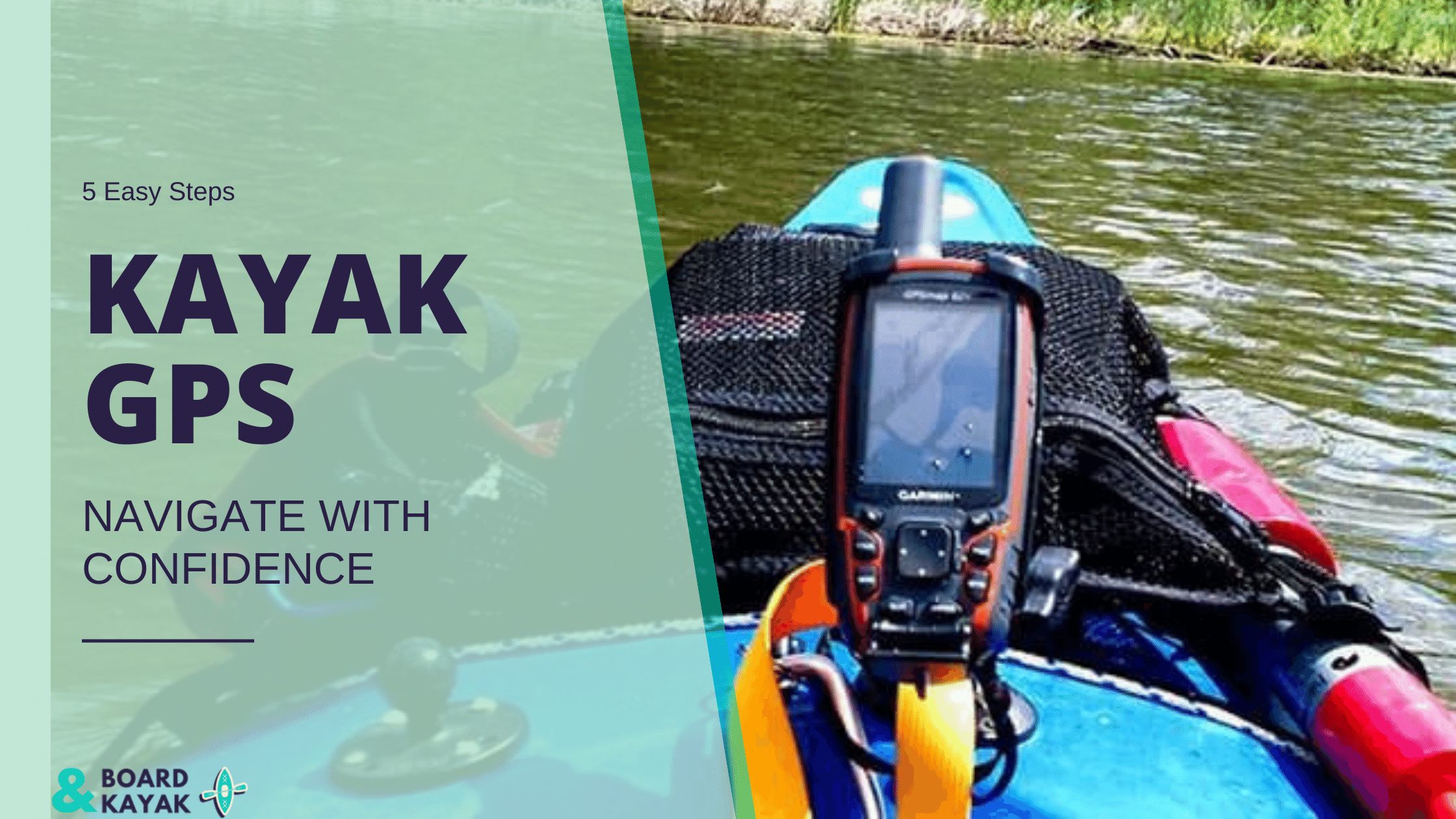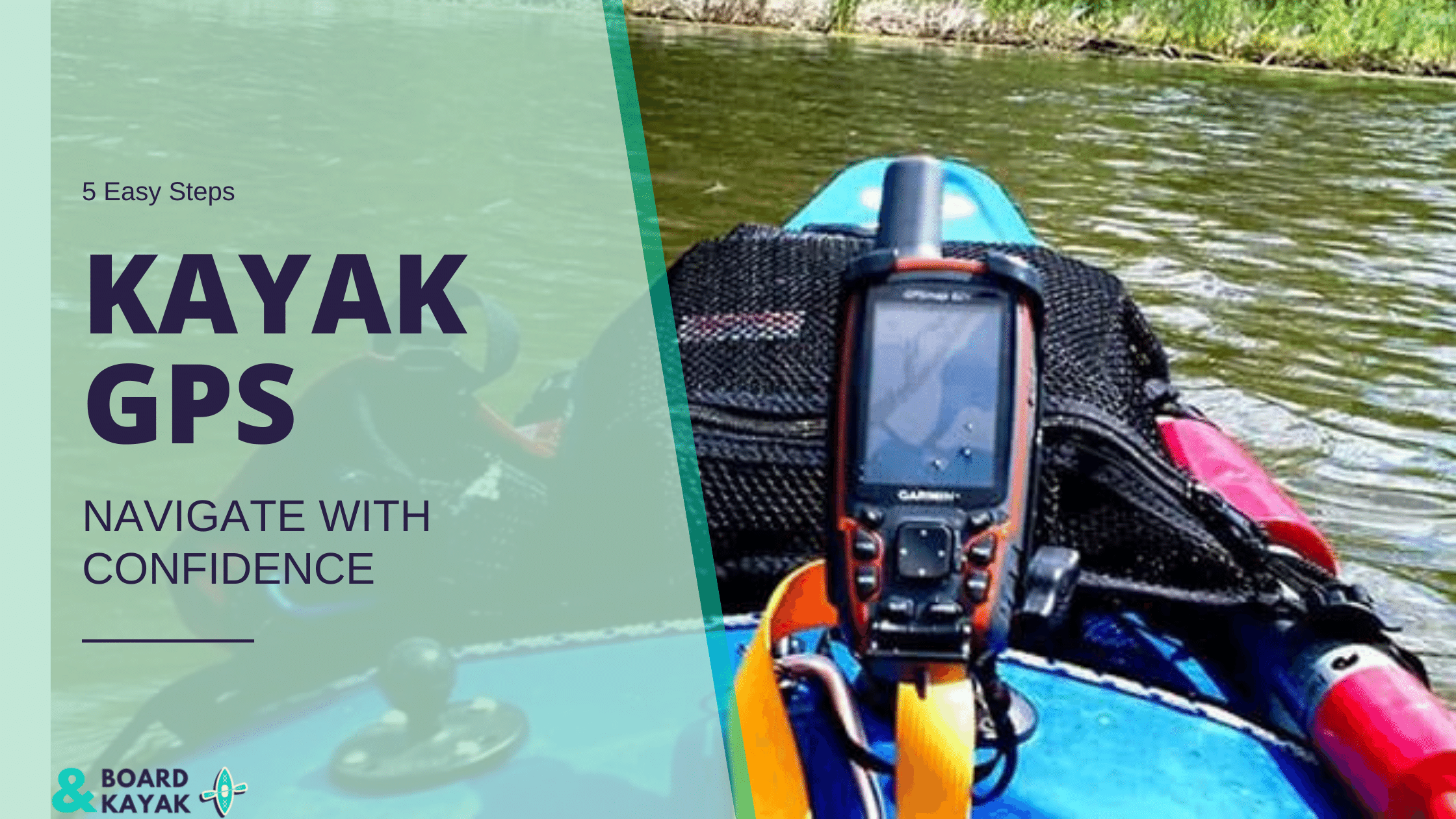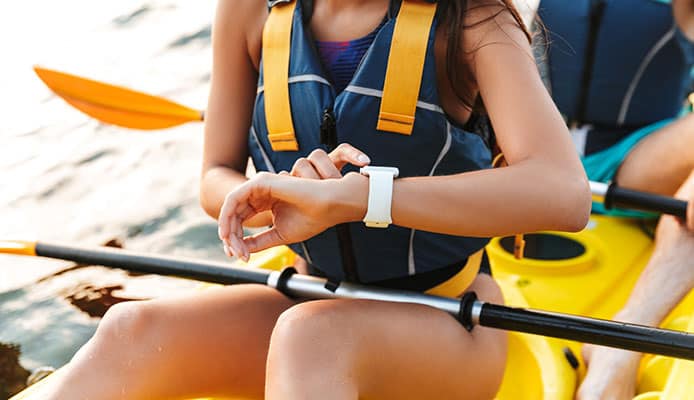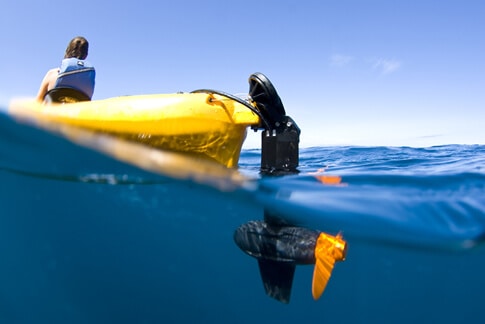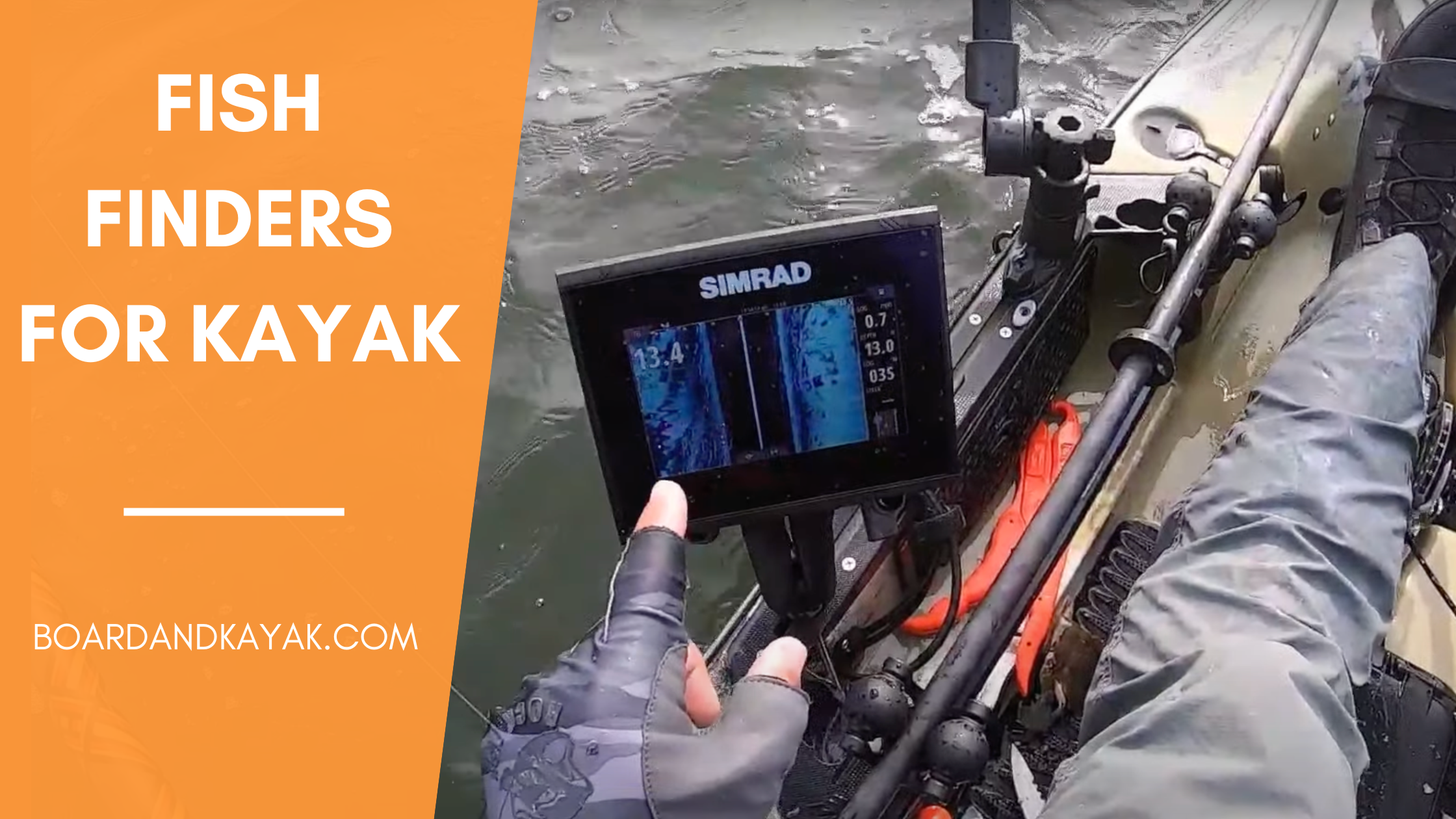
- Alabama
- Alaska
- Arizona
- Arkansas
- California
- Colorado
- Connecticut
- Delaware
- Florida
- Georgia
- Hawaii
- Idaho
- Illinois
- Indiana
- Iowa
- Kansas
- Kentucky
- Louisiana
- Maine
- Maryland
- Massachusetts
- Michigan
- Minnesota
- Mississippi
- Missouri
- Montana
- Nebraska
- Nevada
- New Hampshire
- New Jersey
- New Mexico
- New York
- North Carolina
- North Dakota
- Ohio
- Oklahoma
- Oregon
- Pennsylvania
- Rhode Island
- South Carolina
- South Dakota
- Tennessee
- Texas
- Utah
- Vermont
- Virginia
- Washington
- West Virginia
- Wisconsin
- Wyoming
Navigate with Confidence: Top Kayak GPS Devices 2026
Top Kayak GPS Devices
Kayaking is not limited to leisurely paddles along the coastline or circling a calm lake. The possibilities are endless with the right kayak and a spirit of adventure! You can explore remote islands, head upstream to discover the source of a river, navigate through fast currents and rapids, or even navigate through untouched forests only accessible by waterways.
However, for safe exploration, it's essential to have a way to navigate and find your way back to civilization. This is where a GPS device comes in handy. With the ability to instantly identify your location at any time and in any part of the world, you can confidently enjoy your kayaking adventure, whether it involves crossing oceans or exploring a network of rivers and streams.
However, finding a suitable GPS device for kayaking can be challenging, but don't worry. We're here to help! Check out our list of the best kayak GPS units below and read the complete buying guide to learn everything you need about the best GPS devices for your next kayaking adventure!
The 7 Best Kayak GPS Devices: Stay Safe on the Water
Garmin GPSMAP 64st GPS
Things we like:
- Equipped to work with both the GPS and the GLONASS systems
- A subscription to BirdsEye Satellite imagery is included in addition to the preloaded TOPO US 100K maps and 250K Worldwide Geocaches.
- Easily readable in the daytime, even in bright sunlight.
Things we don't like:
- The screen measures 2.6 inches but is not touch-sensitive despite its relatively tiny size.
- The user interface does not have a contemporary appearance, nor is it exceptionally intuitive or user-friendly.
- The downloading of extra maps might be a bothersome process.
Even though it is compact, lightweight, and has a design that is reminiscent of a walkie-talkie, the portable GPSMAP 64st delivers capability that is difficult to match.
Even in highly distant places, it maintains a high level of accuracy and reception because of its compatibility with the GPS and GLONASS systems and incorporation of a quad-helix antenna. A globe base map, TOPO US 100K maps, and a one-year subscription to BirdsEye Satellite Imagery are all preloaded into the device. Even when exposed to direct sunlight, despite its small size, the 2.6-inch screen is not difficult to see. Even if it does not respond to touches, this should not be a deal breaker for you.
In addition to that, I adore the method that uses two batteries. It operates on AA batteries or a rechargeable NiMH battery, available separately for added convenience.
Specifications And Data
- Handheld design
- GLONASS-compatible GPS receiver
- A grade of IPX7 for water resistance
- The display size is 2.6 inches and color
twin battery setup with a 16-hour runtime
Magellan eXplorist 510 Waterproof Hiking GPS
Things we like:
- High-end construction standards and feature sets
- Featuring a touchscreen display of 3 inches in size
- Display with a high resolution that is easy to view
- It contains two programmable buttons.
- A video camera, an audio recorder, and a speaker.
- Topographic maps preloaded for 12,000 of the United States' lakes.
Things we don't like:
- It is the item with the highest price on the list.
- Even though it is advertised as having a battery life of 15 hours, it consumes batteries quickly.
- When seen in direct sunlight, the screen becomes less visible.
You should budget a bit for the Magellan Marine Bundle because it is exceptionally high-end.
The eXplorist 510 is a waterproof portable GPS equipped with a touch screen 3 inches in size and two customizable buttons. When you're kayak fishing, your hands may become pretty dirty, so it's beautiful to have a way to interact with the screen that doesn't involve touching it.
It has a 3.2-megapixel camera, microphone, and speaker, allowing users to create geo-tagged material while moving. In addition, it is packed with a vast collection of topographic maps, including a database of 12,000 lakes in the United States. There are two AA batteries provided. However, it is recommended that you have spares on hand. This gadget will completely deplete batteries in less than 15 hours.
Specifications And Data
- Handheld design
- GPS receiver with support for WAAS
- A grade of IPX7 for water resistance
- display with sensitivity to touch measuring 3 inches
- battery life of 15 hours
The Waterproof Marine Garmin GPSMAP 78sc From Garmin
Things we like:
- Marine environment compatible; has an IPX7 grade for water resistance; and a floating design.
- GPS receiver that supports WAAS and is equipped with HotFix technology
- Preloaded with coastline charts and base maps for the whole planet, with the ability to save more maps
- battery life of twenty hours
Things we don't like:
- The 2.6-inch screen is not touch-sensitive and is unusually tiny for a modern device.
- It does not have GLONASS capability.
- The user interface has a little old feel and is challenging to navigate.
This time, Garmin comes up to the plate with the GPSMAP 78sc, a portable GPS device that is built exclusively for use in watersports:
Not only does it have a water resistance grade of IPX7, but it also floats when it gets wet!
Although it is not compatible with GLONASS, it uses WAAS-enabled GPS technology that has HotFix prediction for navigation that is both speedy and accurate. Coastal charts and worldwide base maps for BlueChart g2 are already pre-installed on the device; however, users can add maps onto a micro SD card.
Although I preferred a larger display, the 2.6-inch screen displays depth contours, ports, marinas, and shorelines. Additionally, the 78sc boasts a battery life that is more than excellent at 20 hours.
Specifications And Data
- Handheld design
- GPS receiver with support for WAAS
- A grade of IPX7 for water resistance
- The display size is 2.6 inches and color
- battery life of twenty hours
Garmin eTrex 10 Worldwide Handheld GPS For Kayaks And Other Watercraft
Things we like:
- Affordable while being loaded with functionalities
- Construcción robusta y impermeable al agua
- equipped to use WAAS and also compatible with GLONASS
- High-capacity, user-rechargeable battery with outstanding performance and long life of 25 hours
- Simple in operation and readable even under bright sunlight
Things we don't like:
- It is equipped with a monochrome display that is 2.2 inches in size and has a poor resolution.
- Because of its restricted storage space, it is not feasible to download any extra maps to use with it.
The eTrex ten from Garmin is one of the most excellent kayak GPS devices on the market if not the best overall kayak GPS device. It's out in the open now.
The eTrex 10, although a simple and inexpensive GPS gadget, has outstanding accuracy. At this price range, you won't find a lot of GPS receivers that support WAAS and GLONASS and also use the HotFix technology. However, the default setting includes a base map of the whole planet. For a kayak GPS that is priced so affordably, it has some pretty outstanding features, like a water resistance grade of IPX7 and a battery life of 25 hours.
The display's size of 2.2 inches is the sole indicator that its cost is kind to one's wallet. Not only does it have a poor resolution, but it is also black and white.
Specifications And Data
- Handheld design
- GA PS receiver that is compatible with GLONASS and also has WAAS capability
- A grade of IPX7 for water resistance
- A compass with three axes of rotation and a barometric altimeter is built right in.
- The display size is ois2.2 inches, and the lack and white
- battery life is 25 hours
Garmin eTrex 30x Kayak GPS
Things we like:
- High sensitivity and accurate tracking are guaranteed thanks to its compatibility with GPS, GLONASS, WAAS, and HotFix.
- Integrated barometric altimeter and compass with compensation for tilt on all three axes
- The enormous capacity battery will endure for more than 24 hours.
- Memory that is expandable internally through a port for micro SD cards
Things we don't like:
- The preloaded map of the world's base is simple in appearance and devoid of any information.
- User interface tnot intuitive
- The screen, although legible, is nonetheless relatively modest in size.
The eTrex 10 and the eTrex 30x from Garmin are pretty simple, but the eTrex 30x is especially wallet-friendly. Nevertheless, it is notably quicker and more precise and has an improved screen.
Even though it has a color display that can be viewed in bright sunlight, the screen size is still only 2.2 inches.
The eTrex 30x utilizes GPS in conjunction with the GLONASS system, is WAAS-enabled to achieve high sensitivity, and uses the HotFix satellite prediction algorithm to get quicker readings.
A basic map of the globe is already loaded. Even though you won't receive physical nautical charts, the fact that the internal memory is extensible more than makes up for it.
In addition, a single charge from a Li-ion battery may last up to 25 hours.
Specifications And Data
- Handheld design
- GPS receiver that is compatible with GLONASS and also has WAAS capability
- A grade of IPX7 for water resistance
- 2.2-inch 65K display color screen
- battery life of 25 hours
GPS Unit For Kayak, Garmin Foretrex 401 Waterproof
Things we like:
- Design that is both lightweight and wearable.
- Having a grade of IPX7 for resistance to water
- Resistance, navigational information, and barometric readings.
- When it is set to GPS mode, it has a battery life of 17 hours.
Things we don't like:
- The display is just 1.6 inches, which is about average for a gadget designed to be worn like a watch.
- The screen is in black and white, a basic format.
- Only a basic map is included, and there is no opportunity to add a mapping.
None of my previous recommendations for the best kayak GPS could be described as "bulky." However, you won't understand the meaning of portable unless you have used a gadget like a wristwatch, such as the Garmin Foretrex 401."
The fact that it has an IPX7 classification shows that it is waterproof, an essential quality for kayaks. Two AAA batteries power the gadget, which has a potential run time of up to 17 hours when using the GPS function.
The Foretrex 401 comes preloaded with a basic map. However, there is no ability to save different mapping on this model. Another potential drawback is the screen, which is 1.6 inches and is only available in black and white. The mesh seems rather basic.
Nevertheless, a wearable kayak GPS gadget can still display crucial information concerning your position.
Specifications And Data
- Design for a "Watch" that is wearable
- GPS receiver
- A grade of IPX7 for water resistance
- A monochrome monitor measuring 1.6 inches in size
- Battery life of 17 hours
Simrad Cruise-5 Chart Plotter GPS Navigation Device
Things we like:
- A CHIRP sonar transducer-equipped GPS in the form of a console
- Robust construction that is resistant to water
- Preloaded with a base map of the entire world and coastline charts of the United States
- A screen measuring 5 inches in diameter that contains both buttons and dials for control
Things we don't like:
- The purchase of additional mapping cards is required for more detailed information.
- It is more cumbersome and cumbersome than the choices that came before it.
- A battery must be purchased separately.
- Not exactly a choice for those on a tight budget
On my list, the only model that can be mounted on a console is the Simrad Cruise 5. It can also function as a chart plotter, sonar, and GPS navigation device with an integrated CHIRP sonar transducer to track depth.
Although it comes preloaded with a basic map of the entire planet and coastline charts for the United States, I was able to identify a few errors that likely result from a lack of updates. You want to get some more mapping cards if you find that you require more information. The fact that it is designed to be attached to the console of a kayak makes it considerably more significant than the alternatives I had considered. An obvious step forward is the massive display, which measures 5 inches and has a rotary dial and button controls.
Specifications And Data
- Console-mounting design
- combined GPS and CHIRP sonar receiver
- A grade of IPX7 for water resistance
- the screen size of 5 inches
- Sources of electricity from the outside
There is more to kayaking than paddling leisurely along the coast or circling a calm lake.
There are no limits to what you can do with the right kayak and a healthy dose of adventure spirit!
A remote island far offshore can be reached by paddling out. Seeing the source of a lake or river is easy if you head upstream. The currents and rapids can be tackled. Only a few brave souls who venture along the waterways can see untouched forests untouched by humans.
It's all about the adventure when you kayak!
It would be best if you had a way to navigate your way back to civilization safely (keyword) on these exploring trips.
GPS devices come in handy in such situations. Paddling adventures, whether crossing the ocean or exploring rivers and streams, are safer when you can instantly identify your location at any time.
Choosing a suitable kayak GPS device can be a challenge. That's why we're here to help.
Learn more about choosing the best kayak GPS devices for your next adventure by reading our complete buying guide below.
A kayak GPS is likely to be the single most frequently asked question.
Today's smartphones are equipped with GPS capabilities due to technological advancements. Strava, Runkeeper, All Trails, Snapchat, and even Google Maps offer GPS positioning to show your location instantly. Using your smartphone, you can track your location, whatever you're doing.
That seems like the right solution for you. Considering smartphones have GPS built, why would anyone need a GPS device?
As a kayaker, you need GPS on your cellphone for a few excellent and straightforward reasons.
In addition to being sleek, stylish, and ultra-functional, smartphones are also designed to be durable. Despite their rugged design, they aren't meant to survive the rough-and-tumble life of the great outdoors. The phone can be protected with extraordinary cases, but at the end of the day, it's a delicate electronic device that can be damaged if dropped, stepped on, or dropped in water.
On the other hand, dedicated GPS devices are built to last. Drops and falls are no problem for them because they are rugged, waterproof, and able to withstand drops. No matter what kayaking adventure you undertake, whether crossing the ocean, tackling rapids, or paddling up/downstream, they are the intelligent, rugged solution you need.
When was the last time you bought a smartphone? How much did you spend? It's probably reasonably high if you have one of the newer, high-end smartphones. Should your phone be lost or damaged, are you willing to lose your investment?
The cost of a GPS device is much lower than that of a smartphone. While it's not as helpful elsewhere or in other aspects of your life, you can trust that it's tough and can survive your kayaking adventures for a fraction of what you'd pay for a smartphone. Your smartphone is a significant investment, so protecting tit is worth a small investment.
Smartphone apps include charts and maps based on the most accurate data available to Google, Apple, and other companies. Because DBecausethey isn't focused on navigation, they may not have the most up-to-date maps. If you don't have an up-to-date map, you could find yourself in real trouble if you don't know what to look for, such as currents, terrain, river flows, and coastlines.
The latest topographical maps are available through most GPS devices via the satellite network of the Department of Defense. Using it will always lead you to the most accurate and up-to-date information.
Even if you already own a smartphone, investing in a GPS device makes sense, right? You'll be safer if you have a purpose-built, waterproof, highly accurate device for kayaking.
You can benefit from kayaking GPS devices in the following ways:
Improve your technique and stamina by monitoring your paddling performance (speed, time, distance, etc.)
Using waypoints, plan your trip, resting, camping, or portaging
If it's dark, stormy, or foggy, you can still stay on course (don't forget your kayak lights).
Make sure your family and friends know where you are so they can follow your itinerary
Keep a list of points of interest or dangerous locations you must avoid later/on your next trip/on your return
A Kayak GPS Buying Guide: What to Look For
The GPS unit's design
GPS devices for kayaks are available in three different designs:
A GPS unit mounted on a vehicle
It is a smaller, battery-powered version of the GPS console on fishing boats and larger ships. You can mount them on your kayak using a mounting system (universal or specific to the console) and use them to mark your location on GPS maps.
These GPS devices are the most expensive and require specialized mounting. Their large displays, however, make them easier to use for accurate navigation.
GPS units for handheld devices
These handheld GPS devices look like tiny cellphones but have small screens (I'm looking at you, Nokia 3310!). A waterproof and rugged case is usually surrounded by rubber or synthetic rubber that increases its durability and helps you grip it even when wet. Many of these are attached to your PFD or worn around your neck with lanyards or clip rings that can be carried in a pocket or pack. Even though they have a smaller display than mounted devices, they still offer a lot of versatility. Satellite phones and two-way radios are even available in some models!
GPS units that can be worn
Wearable GPS devices are essentially GPS smartwatches. They come with heart rate and fitness tracking software and GPS mapping capabilities. Although they're not the toughest, they're unlikely to get dropped or damaged. However, it is a bit more challenging to use GPS navigation on their tiny screens because they're worn on your wrist.
There's more to coverage than GPS
The coverage of a GPS device is always an essential factor to consider. Besides, you'll probably only use one in the wilderness or offshore; their cell phone coverage isn't available.
The following satellite positioning systems are available around the world:
Global Positioning System
GPS is a U.S.-based system maintained and made available by the Defense Department. It is one of the oldest and most accurate systems of its kind. Anywhere in North America, 31 satellites equipped with rubidium clocks provide data directly to your device.
Global Positioning System
GLONASS is a Russian satellite navigation system created a few years after GPS. Most often, it's only available in Russia (including the Pacific Ocean), but it may also be available in North America in various places.
A. Galilei
Galileo is the European version, which works with devices that support GPS and GLONASS. To provide widespread coverage, 24 satellites are used in six orbital planes, making them more accurate at higher latitudes.
ZSS/QZSS
In contrast to the three primary satellite systems, QZSS does not require onboard atomic clocks. Even though it doesn't cover as much as the others, it's exact and stable.
BeiDou
Developed as an alternative to the Russian, American, and European satellite systems, BeiDou is a Chinese satellite system. It will be accurate to a millimeter when fully deployed, even though the launch is still in stages.
North American and European GPS devices typically support GPS, GLONASS, and Galileo. Most GPS devices manufactured in China use BeiDou, although they can also access the other three networks. As with GPS, GLONASS, and Galileo, Japanese-made GPS devices will also use QZSS.
GPS devices should work with various satellite systems when you shop for them. This ensures that you'll have the most coverage no matter where you travel for kayaking adventures in the world.
WAAS
"Wide Area Augmentation System" is a specialized system developed by the FAA to improve GPS accuracy and reliability.
WAAS uses a network of ground-based stations to gather readings and measurements to provide the most accurate data possible.
However, WAAS is only available in the Western Hemisphere, and GPS devices built in the US typically support it.
Accuracy
It's essential to navigate the great outdoors with accuracy!
Imagine taking a wrong turn on your river journey if you don't have an accurate GPS device or getting swept up in a dangerous current on your ocean journey if you do not have an actual GPS device.
There's nothing good about that.
Although most GPS systems are designed to be highly accurate, sometimes down to millimeters, kilometers, yards, feet, inches, centimeters, or even millimeters, unless you're paddling rocky coastlines in the dark or navigating treacherous currents, you don't have to worry about getting sent off-course very often with this degree of accuracy.
Life of the battery
Taking a kayaking device requires a lot of battery life because there is no easy way to recharge it.
The only option is to buy some kayak-mounted solar panels.
You must ensure the kayak GPS has adequate battery life to last throughout the trip or until you can get to a charging station. A kayak GPS without a battery is just a plastic block that takes up space in your pack.
Ensure that any GPS device's battery life is sufficient to keep it charged and active for your paddling trip by reading reviews and studying the specs.
Internal Memory
Maps and charts can be stored on the device with internal memory storage. As a result, you can access them at any time, even if you lose the PS signal.
The built-in memory of kayak GPS devices typically ranges from 1GB to 88 GB, expanding the internal memory of some smartphones with SD card slots. Is even possible
There's no doubt that more memory = better since more charts, maps, and data can be stored.
Resistance to water/waterproofing
It doesn't matter how careful or good a paddler you are; getting wet is always a risk.
You might get blown away by the wind.
There might be an underwater obstacle that causes you to capsize if you strike it hard enough.
Perhaps you're facing ocean waves or rapids.
Suppose it starts raining, and you get soaked.
There is always a chance that you will get soaked whenever you are near water. Certain things are just part of the nature of water sports and the outdoors.
A waterproof GPS device (not your expensive smartphone!) is the best preparation for such an event.
An IP rating of 4 or higher is typically required for kayak GPS devices.
An introduction to IP ratings:
First, dustproofing is indicated, and second, waterproofing is told.
Unlike dust-proof devices, IPX4 devices are splash-resistant. A device with IP56 protection is protected against dust ingress and high-pressure water jets.
A device with a higher rating (5, 6, 7, or 8) will be more dust/waterproof.
A detailed map of the area
Many GPS devices come preloaded with a map package; others allow you to purchase or install additional maps.
Investing in these is a wise move. A GPS device that has more (and more accurate) maps will make navigation easier.
The topographic map will show you all the mountain ranges, valleys, canyons, flatlands, and other features around the river or lake. Whether traveling upstream/downstream or paddling to a specific location, these are excellent tools. You'll be able to map out a safe route and mark the correct waypoints much easier.
However, topographic maps are usually quite large, which means they'll take up a lot of space on the internal memory of your GPS device. The older maps may have to be deleted or uninstalled to make way for the new ones.
BirdsEye Satellite Imagery is another option that can be subscribed to yearly. You'll have access to all the needed maps despite the higher price. This is an excellent option for travel paddlers who need maps for different locations.
Readability and screen size
You can display more or fewer data at once, depending on your screen size. The bigger the screen, the more information you can see on the map at once. You can also make the details (text/numerical data) larger to make navigation easier. Their backlighting makes larger screens more accessible to see, even in dark or foggy conditions.
The downside, however, is that larger screens require more power, so they run out of battery life much faster.
The trade-off is worth carefully considering: big screens are easier to read, while small screens are more energy-efficient.
Size and portability of devices
You should consider the size of your screen, as well as the size of the device.
If you want to carry a large device, you'll need to mount it to your kayak. Mounted devices, however, are less portable. Taking it onshore or portaging your kayak may be difficult if you cannot remove it from the kayak mount (quickly).
Alternatively, small devices are more accessible to transport, but their screens are usually smaller (meaning less readability and fewer details visible at a glance). In addition, smaller devices are more likely to be lost or misplaced.
Again, both large and small devices have their advantages and disadvantages. Depending on what you plan to do, consider which is most appropriate.
Additional Features
GPS devices should also have the following features:
● Phone. Investing in a GPS device that can also serve as a satellite phone (or even a regular phone) is a great idea. An integrated speaker and receiver are required, and a transmitter is needed to connect to satellite or cellular networks. Having multiple devices to carry, charge, and use is a hassle when you're out on your adventure!
● Camera. You will surely want one of these bad boys if you're kayaking down rapids or paddling alongside dolphins. For action photographers, GPS devices with built-in cameras are ideal.
● Clip/carabiner. Handheld GPS devices can be securely attached to backpacks or PFDs with this handy feature. The device is easily within reach, so you can quickly hcheckyour location on the map. This way, you have both hands free to paddle.
● Fitness tracking capabilities. Many kayakers keep track of their performance to improve their speed/time/distance when kayaking. You can evaluate your body's response to your paddling trip using fitness tracking devices such as heart rate monitors, calorie counters, and oxygen sensors. These features are programmed into most wearable GPS devices.
● Altimeter and Compass. In the event of a GPS map failure, these tools could prove helpful as a "failsafe." A compass and altimeter are always beneficial in charting your location and finding your way home.
● SONAR. Typically, this feature can be found on a GPS device mounted on a boat, such as those used for fishing. The CHIRP (Compressed High-Intensity Radiated Pulse) system scans your underwater environment using multi-frequency sonar signals. You can use it to find fish, gauge the depth of a river/ocean/lake, and look for dangerous underwater creatures.
● HotFix. To improve the connection between your device and GPS satellites, this feature "predicts" the location of satellites for the next few days (based on previously collected positioning data). With this updated technology, the most recent devices have significantly improved connectivity, resulting in a more reliable connection.
Frequently Asked Questions
Which GPS is best for kayaking?
Garmin GPSMAP 64sx, Handheld GPS with Altimeter and Compass, and Garmin eTrex 32x, Rugged Handheld GPS Navigator. A rugged handheld GPS navigator from Garmin, the eTrex 22x, is available in black or navy.
What is the best Garmin GPS for kayaking?
Regarding kayaking GPS watches, the Garmin Fenix 5 stands head and shoulders above the competition. With a paddle sports setting, it has excellent navigational and sporting features. You'll always be able to find your location with both GLONASS and GPS compatibility.
What are the benefits of getting a handheld GPS?
Proper navigation is essential, whether in the backcountry or open water. A handheld GPS is the best navigator for finding routes, recording tracks, or finding geocaches.
What is the most accurate handheld GPS?
Garmin GPSMAP 66st is the best in its class in terms of accuracy and reliability, earning our top rating. Its powerful quad-helix antenna can connect to more satellite networks with greater accuracy than most other models.
Can you kayak with the Garmin Instinct GPS?
It is clear from its outdoorsy design and the wide variety of outdoor activities it counts among its activity tracking modes, including mountain biking, open-water swimming, snowboarding, and kayaking.
